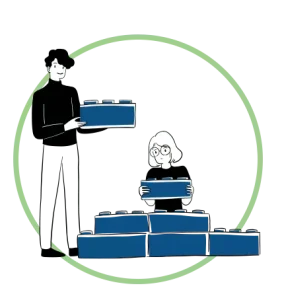PCIT stands for Parent-Child Interaction Therapy, which is a therapeutic approach designed to improve the parent-child relationship and address a number of behavioral and emotional difficulties in children, including:
- Noncompliance with adult requests
- Emotional dysregulation
- Low frustration tolerance
- Easy loss of temper
- Difficulty taking turns/interrupting
- Selective Mutism*
Although in research PCIT has been found to be an effective intervention for a variety of difficulties, many of the core treatment components remain the same across diagnoses. Here is an overall summary of these PCIT components:
- PCIT is a short-term, evidence-based therapy that focuses on the enhancement of parent-child interactions while teaching parents effective behavior management and social responding techniques. It is typically used with children aged two to seven years who display disruptive behaviors, aggression, or difficulties in social interactions.
- The structure and components of PCIT consist of two main phases: Child-Directed Interaction (CDI) and Parent-Directed Interaction (PDI)
- Child-Directed Interaction (CDI): In this phase, parents engage in play sessions with their child while receiving real-time coaching from a therapist. The therapist observes this interaction either in-person within the playroom or separately through a window or video, depending on what seems most clinically warranted. The therapist then provides feedback and guidance to parents to strengthen positive interactions, improve communication, and enhance the child’s self-esteem.
- Parent-Directed Interaction (PDI): In this phase, parents learn and practice effective behavior management strategies. The therapist coaches parents on using specific techniques such as clear and consistent commands, praise and rewards for desired behavior, and appropriate consequences for challenging behavior. The focus is on promoting positive discipline, setting limits, and improving the child’s compliance and self-control.
PCIT has been shown to be effective in reducing disruptive behaviors, improving social skills, and strengthening the parent-child bond. It also helps parents develop more confidence and competence in responding to their child’s emotional and behavioral difficulties.


